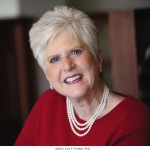
Widgetized Section
Go to Admin » Appearance » Widgets » and move Gabfire Widget: Social into that MastheadOverlay zone
Feeling Stalled In Your Career?
Your communication skills might be holding you back at work
 The recent release Sheryl Sandberg’s book Lean In has rekindled the national debate about what holds women back in the workplace. Some have said it’s a lack of ambition. Many women, including me, don’t believe that. I do think one thing that does hold women, and men, back is a lack of effective communication skills.
The recent release Sheryl Sandberg’s book Lean In has rekindled the national debate about what holds women back in the workplace. Some have said it’s a lack of ambition. Many women, including me, don’t believe that. I do think one thing that does hold women, and men, back is a lack of effective communication skills.
And I’m not the only one who feels that way. People who feel like they are they are lucky in their careers credit strong communication skills as one of the top factors contributing to their success according to a LinkedIn survey. But, unlike winning the lottery, there’s not a lot of luck to being a good communicator. To be truly effective you need to develop your skills. That means focusing on the other person and asking questions when you don’t understand.
Things like having a different “frame of reference” can easily lead to misunderstanding. A place where this often causes problem is when it comes to “casual attire.” Now some people think casual means a pair of slacks and a sweater, others think T-shirt and frayed jeans. And it doesn’t necessarily depend on the size of the company. I’ve been allowed to wear jeans in corporate environments, yet not told “no jeans” at smaller offices. A disconnect like this can be easily corrected or avoided completely with a written dress code. It’s all about communication.
What can be more problematic is when the disconnect affects a working relationship. This can happen when your new boss thinks “frequent updates” means several times a week while you think that “frequent updates” means once a week. A misunderstanding like this can create real problems.
These types of disconnects can happen for many reasons. Here are four to watch out for:
- Gender Differences – Women tend to focus on indirect and subtle messages while men are more likely to focus on what’s actually being said. Both sides can misinterpret the other person’s meaning by not paying attention to the verbal and nonverbal cues.
- Assumptions – You can get into trouble by basing thoughts and opinions either positively or negatively on the other person’s gender, age, education, position, etc. Like when you question the knowledge of the woman at the Apple store because she looks over 50. This can be particularly problematic in today’s diverse, multigenerational workforce.
- Recreational Listening – It’s easy to miss part of someone’s message if you’re planning your response or checking your phone while the other person is talking. You can avoid misunderstandings by simply paying attention.
- Mixed Signals – Avoid doing things like smiling and/or nodding your head when you don’t agree with what someone is saying. Doing this sends a nonverbal message than you are in agreement. While we are all guilty, women tend to do this more than men.
One way to avoid misunderstandings with the boss is to make sure you clarify what you think the she means. For instance you might want to say “I understand you want frequent updates. How often does that mean? Is it once a week or every few days?” If you’re the boss try to be specific. Then everyone will have the same expectations.
Being an effective communicator doesn’t just happen. It’s easy to let our assumptions get in the way when we’re connecting with others. It’s easy to “tune out” when we think something isn’t important. Or smile when we disagree to make the other person feel we hear them. But watching out for potential communication pitfalls can help keep workplace misunderstandings to a minimum. So you can spend time getting ahead not getting out of trouble.







You must be logged in to post a comment Login